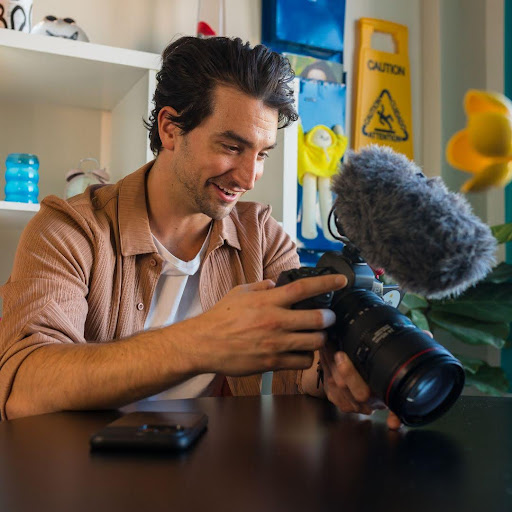How Digital Curiosity, Creative Niches, and Smart Lead Strategies Are Redefining Online Growth in 2025

In the rapidly evolving digital world, creators, influencers, and businesses are no longer relying on random content strategies or old-school marketing. The internet today rewards focus, engagement, and data-backed creativity. Whether you’re building a brand, scaling your online audience, or selling services, growth now depends on how effectively you connect curiosity with value.
From influencers choosing the right content creator niches to marketers exploring creative real estate lead magnets, and even casual Instagram users wondering about privacy during screenshots — everything is part of a larger digital behavior shift. Audiences have become smarter, creators more strategic, and algorithms more unpredictable.
Let’s dive deeper into how these three trends — niche content creation, digital transparency, and innovative lead generation — are shaping the future of online influence in 2025.
The Rise of Digital Personalization: Why Every Creator Needs a Niche
A decade ago, being “everywhere” online seemed like the fastest route to growth. But in 2025, audiences prefer depth over breadth. They no longer follow creators who post about everything; they follow creators who own a topic.
That’s why identifying content creator niches is one of the most important first steps for anyone entering the creator economy. A niche helps define your audience, tone, and monetization potential. It’s not just about what you post — it’s about why people come to you.
Creators who build around clear niches — whether it’s sustainable fashion, digital minimalism, or AI-driven marketing — tend to attract more loyal followers and better brand partnerships. Instead of chasing trends, they build authority. This approach aligns with how algorithms now reward consistency and engagement rather than random virality.
If you’re planning to start as a creator or refine your focus, exploring your ideal niche is like setting the GPS before the journey begins. It determines where you’ll go and how far you’ll reach.
How Audiences Are Driving the Next Phase of Creator Growth
One of the most fascinating changes in 2025’s digital culture is that audiences now co-create. Followers aren’t passive consumers anymore — they interact, remix, and even influence the content direction.
Creators who treat their audience as collaborators rather than spectators are winning big. For example:
- Tech reviewers who let followers vote on which gadget to test next.
- Fitness influencers who crowdsource 30-day challenge ideas.
- Lifestyle creators who feature user-generated stories in their content.
This participatory model strengthens community trust, boosts engagement, and enhances algorithmic reach. The best part? It builds emotional loyalty — something no ad campaign can buy.
In essence, the niche gives direction, and the audience gives depth. Together, they create a feedback loop that fuels growth naturally.
Digital Transparency: The Era of Responsible Curiosity
In 2025, the internet is both more connected and more cautious. People crave transparency — not only from brands and creators but also from the platforms themselves.
A great example of this digital curiosity can be seen in one of the most searched questions online: “Does Instagram notify when you screenshot?” The topic reflects how social media users are becoming increasingly aware of their privacy, boundaries, and digital footprints. The full answer, explored in does Instagram notify when you screenshot, reveals just how much platform behavior influences online trust.
This curiosity is not just about gossip or features — it’s about people understanding how technology interacts with personal space. Privacy awareness is becoming a new digital literacy skill, and users expect platforms to be open about how data, notifications, and interactions work.
From Views to Value: Monetization Beyond Follower Counts
In the early days of social media, follower count was the ultimate badge of honor. But in 2025, conversion matters far more than visibility. Brands and creators have realized that 1,000 loyal fans are often more valuable than 100,000 casual ones.
This is where lead generation comes into play — especially in industries like real estate, consulting, or education. The key isn’t just reaching people; it’s capturing and nurturing interest. That’s why the new generation of marketers are focusing on creative real estate lead magnets that attract potential clients through value rather than sales pressure.
Imagine offering interactive home value calculators, personalized virtual tours, or AI-powered property matching tools — all designed to engage users and convert curiosity into action. The same logic applies across industries: give before you ask, and your audience will trust you enough to take the next step.
Why Creativity Alone Isn’t Enough Anymore
Creativity is still the foundation of all successful online growth — but now it must be paired with analytics and intent. The smartest creators are treating their content like startups: they test, iterate, and pivot based on data.
Modern content tools provide real-time insights into engagement rates, watch time, and sentiment analysis. This helps creators understand not just what content works, but why it works. For instance:
- A beauty influencer can see that “morning skincare routines” get better retention than “night routines.”
- A finance educator can learn that short, chart-based Reels outperform long commentary videos.
- A gaming streamer might realize that educational clips attract more sponsorships than reaction videos.
By merging creative intuition with analytical precision, creators can future-proof their growth. The era of guessing is over; this is the age of data-driven creativity.
Social Media and Trust: The New Currency
In an environment where misinformation spreads easily, credibility has become the ultimate differentiator. Audiences value creators who are transparent about sponsorships, share authentic experiences, and prioritize honesty over hype.
For instance, Instagram creators who clearly label collaborations or admit when a product didn’t meet expectations often gain more trust — even if it costs them a partnership or two. Similarly, real estate agents who use transparent digital lead magnets tend to build stronger, longer-lasting client relationships.
Trust isn’t built overnight, but once established, it compounds faster than any algorithmic boost.
AI’s Role in the Creator Economy
Artificial intelligence has quietly become the silent collaborator of every successful digital creator. AI-powered tools can now:
- Suggest niche-specific keywords.
- Write first drafts or video scripts.
- Generate post ideas based on trending data.
- Even predict engagement before publishing.
This doesn’t make human creativity obsolete — it amplifies it. The future creator is part artist, part analyst, and part technologist. Those who embrace AI’s assistance rather than fear it will stay ahead of the curve.
Just like camera filters once enhanced photography without replacing photographers, AI is doing the same for creativity.
Bridging Influence, Privacy, and Value
What ties all these shifts together — from niche creation to digital awareness to smart lead magnets — is intentional connection. Whether you’re a creator, brand, or business, the goal is the same: to create genuine value in exchange for trust and attention.
Creators are realizing that every view, click, and comment is a sign of trust. Businesses are learning that customers don’t want to be sold to — they want to be guided. And audiences, more than ever, expect respect for their data and digital presence.
As technology advances, this balance between connection and caution will define the next wave of online growth.
Final Thoughts
The online landscape in 2025 is more intelligent, human, and curious than ever. Growth now depends on how meaningfully you blend creativity, ethics, and value. Choosing your niche through content creator niches helps you attract the right followers. Staying informed about privacy questions like does Instagram notify when you screenshot builds digital awareness. And using innovative real estate lead magnets shows how value-first strategies can turn engagement into conversions.
At the end of the day, digital success isn’t about chasing algorithms — it’s about understanding people. The future belongs to those who connect curiosity with clarity and creativity with conscience.
Frequently Asked Questions (FAQs)
1. What’s the importance of choosing a content creator niche?
A niche defines your identity, helps you attract the right audience, and allows brands to see you as an expert rather than a generalist. It’s the foundation of long-term digital growth.
2. Can I change my niche later?
Yes, but transitions should be gradual. Introduce related content, test audience reactions, and then pivot strategically once engagement stabilizes.
3. Does Instagram notify when someone takes a screenshot?
Instagram doesn’t notify for regular posts or stories, but it may alert users for disappearing photos or messages in DMs. Check does Instagram notify when you screenshot for the latest policy updates.
4. What are lead magnets, and how do they help in real estate?
Lead magnets are free resources (like eBooks, calculators, or webinars) offered in exchange for contact details. In real estate, they attract quality leads while showcasing your expertise.
5. How can creators monetize beyond ads and sponsorships?
Creators can sell digital products, offer paid communities, run workshops, or collaborate with brands aligned with their niche for authentic revenue streams.
6. Will AI replace digital creators?
No. AI enhances productivity but can’t replicate human emotion, storytelling, or authenticity — the core elements of creative influence.






